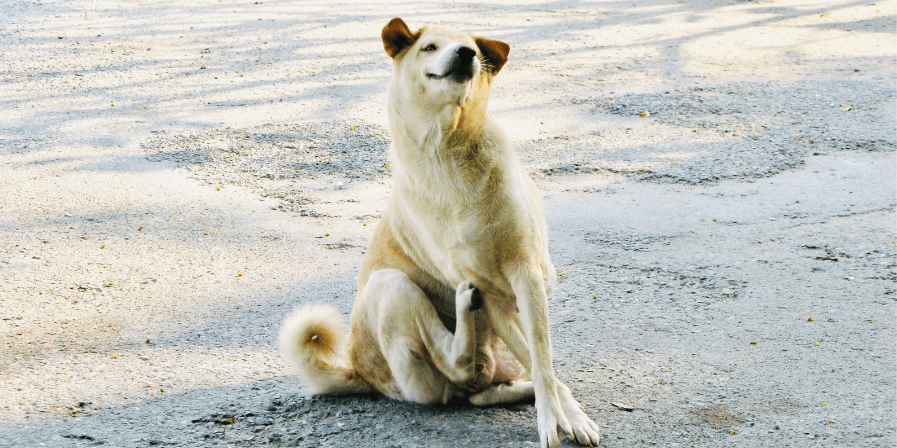Dog Dandruff: Causes, Symptoms, and How to Treat It

Just like humans, dogs can suffer from dandruff—flaky, dry, or greasy skin that can cause discomfort, itching, and irritation. While some cases are mild and can be managed with proper care, persistent dandruff can indicate underlying health issues such as allergies, infections, or hormonal imbalances. Understanding the root cause of dandruff is essential to keeping your dog’s skin healthy and comfortable.
In this comprehensive guide, we will explore the causes, symptoms, diagnosis, and treatment options for dog dandruff, helping you provide the best possible care for your furry friend.
Understanding Dog Dandruff
Dandruff in dogs occurs when the skin produces and sheds an excessive amount of dead skin cells, which then accumulate on the fur as visible white or yellow flakes. Normally, a dog’s skin cells go through a renewal process, where old cells shed naturally while new ones take their place. However, when this cycle is disrupted—due to dryness, excess oil production, or an underlying medical issue—the shedding process becomes unbalanced, resulting in noticeable dandruff.
Many pet owners assume dandruff is simply a cosmetic issue, but it can actually be a sign of an underlying health problem. In some cases, it may be accompanied by itching, skin redness, hair loss, or an unpleasant odor. If left untreated, dandruff can lead to more severe skin conditions and discomfort for your pet.
Types of Dandruff in Dogs
Dandruff in dogs can present itself in different forms, depending on the underlying cause. The three most common types include:
1. Seborrhea Sicca (Dry Seborrhea)
This type of dandruff is characterized by dry, white flakes that appear on your dog’s coat. It is often caused by a lack of natural skin oils, which results in dry, flaky, and sometimes crusty skin. Dogs with this condition may not show excessive scratching, but their coat may appear dull and rough.
2. Seborrhea Oleosa (Oily Seborrhea)
Unlike dry seborrhea, oily seborrhea is caused by an overproduction of natural skin oils. This results in greasy, clumped-together flakes that stick to the fur. Affected areas may feel oily to the touch and may have a strong, unpleasant odor. This condition can also lead to clogged hair follicles, making the dog more susceptible to bacterial or fungal infections.
3. Walking Dandruff (Cheyletiellosis)
This condition is caused by a parasitic mite known as Cheyletiella, which appears as large, white flakes that move on the dog's skin and fur. These mites feed on skin debris and cause severe itching, inflammation, and hair loss. Unlike normal dandruff, this condition is highly contagious and can spread to other animals and even humans. If you notice that the flakes appear to be moving, a vet visit is essential for proper diagnosis and treatment.
What Causes Dog Dandruff?
Dandruff can be triggered by several factors, and in many cases, multiple causes contribute to the condition.
• Allergies are one of the most common reasons for dandruff in dogs. Environmental allergens like pollen, dust, and mold can lead to skin irritation. Food allergies, particularly to ingredients such as wheat, soy, or certain proteins, may also result in flaking and itchiness.
• Nutritional deficiencies play a significant role in skin health. A diet lacking essential fatty acids, particularly omega-3 and omega-6, can cause dry, flaky skin. These nutrients are responsible for maintaining skin hydration and promoting a healthy, shiny coat.
• Hormonal imbalances can also lead to dandruff. Hypothyroidism, a condition where the thyroid gland does not produce enough hormones, can result in dry, flaky skin and excessive shedding. Similarly, Cushing’s disease, which causes an overproduction of cortisol, can lead to skin problems.
• Low humidity is another contributing factor, especially during colder months when indoor heating systems dry out the air. Dogs living in dry environments are more likely to experience skin dehydration, leading to dandruff.
• Skin infections caused by bacteria or fungi can worsen dandruff, leading to inflamed, itchy skin. Yeast infections, in particular, can result in greasy dandruff accompanied by a strong odor.
• Mite infestations such as Cheyletiellosis ("walking dandruff") cause severe itching and flaking. These mites are highly contagious, meaning all pets in the household may require treatment. ** Diagnosing Dandruff in Dogs**
If your dog’s dandruff persists despite regular grooming, a visit to the veterinarian is recommended to determine the underlying cause. The vet will start with a physical examination, checking for signs of infection, parasites, or skin inflammation.
A skin scraping may be performed to detect mites or fungal infections, while a microscopic examination of skin cells can help diagnose bacterial infections. In cases where allergies are suspected, an elimination diet or intradermal skin testing may be recommended.
For dogs with more severe symptoms, such as hair loss, excessive itching, or chronic skin infections, blood tests may be needed to check for conditions like hypothyroidism or diabetes.
How to Treat Dog Dandruff
Treatment for dog dandruff depends on its cause. Here are some effective ways to manage and treat dandruff in dogs:
1. Regular Grooming
Brushing your dog’s coat daily helps remove dead skin cells and distribute natural oils, preventing dandruff. Using the right brush for your dog’s coat type is essential—short-haired breeds may need soft-bristle brushes, while long-haired dogs require de-matting tools.
2. Balanced Diet and Supplements
A nutritious diet rich in omega-3 and omega-6 fatty acids promotes healthy skin. Fish oil, flaxseed, and foods containing salmon can help maintain skin hydration. Always consult your vet before adding supplements to your dog’s diet.
3. Hydration and Environmental Changes
Ensure your dog drinks enough water daily. If you live in a dry climate or use indoor heating, consider using a humidifier to add moisture to the air.
4. Medicated Shampoos
For mild dandruff, bathing your dog with an oatmeal-based shampoo can help soothe dry, itchy skin. For more persistent cases, a medicated shampoo prescribed by your vet may be necessary. Avoid using human anti-dandruff shampoos, as they can be too harsh for dogs.
5. Veterinary Treatment for Underlying Conditions
If dandruff is caused by hormonal imbalances, allergies, or infections, specific medications may be required. Your vet may prescribe antibiotics for bacterial infections, antifungal treatments for yeast infections, or hormone therapy for endocrine disorders.
6. Parasite Control
If your dog has mites or fleas, treatment will include medicated shampoos, oral medications, and cleaning of bedding and household surfaces to prevent reinfestation.
Conclusion
While dandruff in dogs can often be managed with proper grooming and nutrition, persistent flaking may signal a deeper health issue. Understanding the causes and seeking appropriate treatment will help ensure your dog remains comfortable and healthy. If your dog’s dandruff is accompanied by severe itching, redness, or hair loss, consult a veterinarian to determine the best course of action. With the right care, your dog’s coat can stay healthy, shiny, and flake-free!
At DCC Animal Hospital, our expert veterinarians are committed to providing the highest quality care for your pet’s skin and coat health. If your dog is struggling with dandruff or other skin conditions, visit us for a professional consultation and personalized treatment plan.
FAQs
1. How do you treat dog dandruff?
Regular grooming, a balanced diet rich in omega-3 and omega-6 fatty acids, and proper hydration help prevent dandruff. Using an oatmeal-based or medicated shampoo can soothe irritation. If dandruff persists due to allergies, infections, or parasites, consult a vet for specialized treatment.
2. What food causes dandruff in dogs?
Low-quality pet food with fillers, artificial additives, and allergens like wheat, corn, or certain proteins can trigger dandruff. A diet lacking omega-3 and omega-6 fatty acids can also lead to dry, flaky skin. Feeding a high-quality, nutrient-rich diet supports healthy skin and coat.


 How can we help?
How can we help?